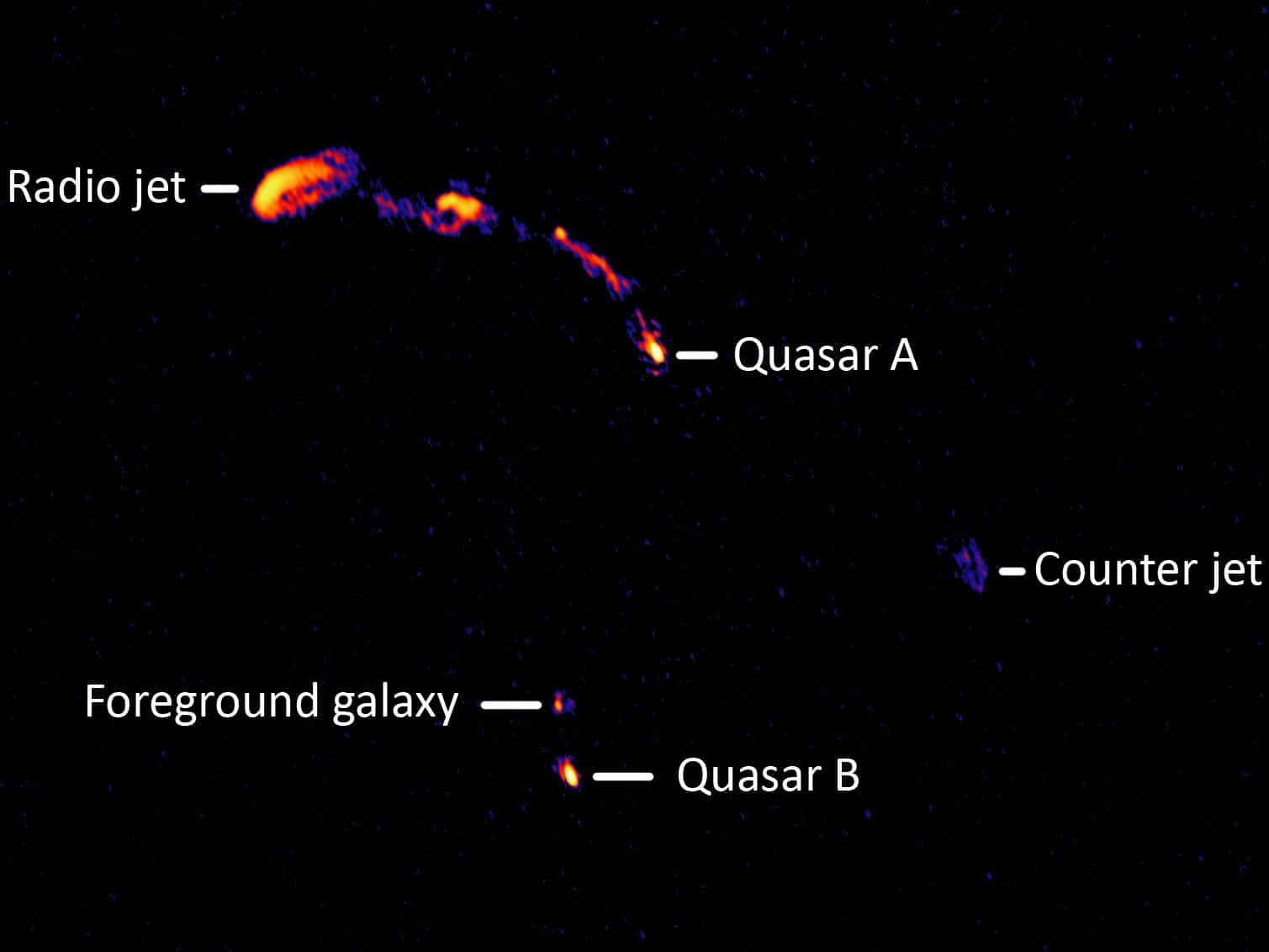The array is spread over a large area within Great Britain and will function as one telescope, which improves its resolution

A new array of radio telescopes has captured its first image showing a massive jet of material being shot out of a galaxy with a supermassive black hole at its core.
The image, taken by the e-Merlin telescope array in the UK, reveals radio emission extending like an arc out from a quasar some 9 billion light-years away. Quasars are the central regions of galaxies dominated by a supermassive black hole spewing energy - and which are considered some of the brightest objects in the universe.
This particular object is known as a double quasar because its light beams are bent by a galaxy closer to Earth that is in the way due to the curvature of space. Such a jump in space manifests itself in gravitational lenses that create a duplication and amplification of the image of the same quasar, the scientists say.
The galaxy on the way, responsible for the gravitational pull, is also visible in some of the images just above the quasar. The radio light in the e-Merlin image raises the possibility that this galaxy also contains a black hole, albeit smaller than the quasar's.
"This first image of the double quasar clearly demonstrates how useful e-Merlin can be in the study of gravitational lensing," said Neil Jackson of the University of Manchester in a press release issued by the university. "By mapping the curvature of light in the hands of mass, we can study the ways in which stars and dark matter are distributed in galaxies and how this has changed as the universe has evolved."
e-Merlin may also help astronomers answer key questions related to the origin and evolution of galaxies, stars and planets.
The radio telescope array is designed to produce detailed radio images of stars and galaxies, using seven telescopes spread over 220 kilometers across the UK as if they were one telescope. Telescopes spread out in this way function as a kind of focusing lens, allowing astronomers to study fine details of astronomical events out to the edge of the visible universe. say the researchers.
For information on the telescope website
More of the topic in Hayadan:
- Astronomers have observed a planet in the Andromeda galaxy
- Iran - our satellite can photograph Israel
- Not a light year, a jet year (and website editor's disclaimer)
- For the first time, a plasma jet from a black hole at the center of a radio galaxy has been imaged
- The TECSAR radar satellite - a year in space
